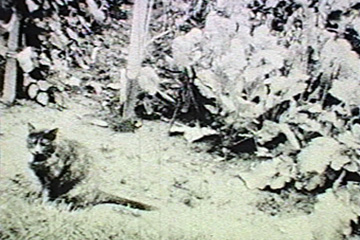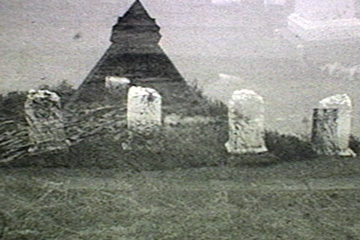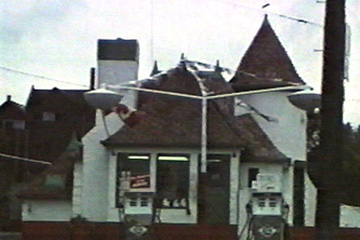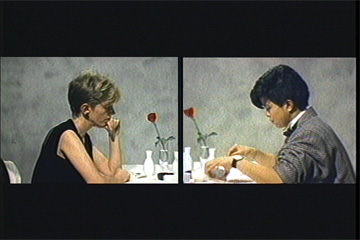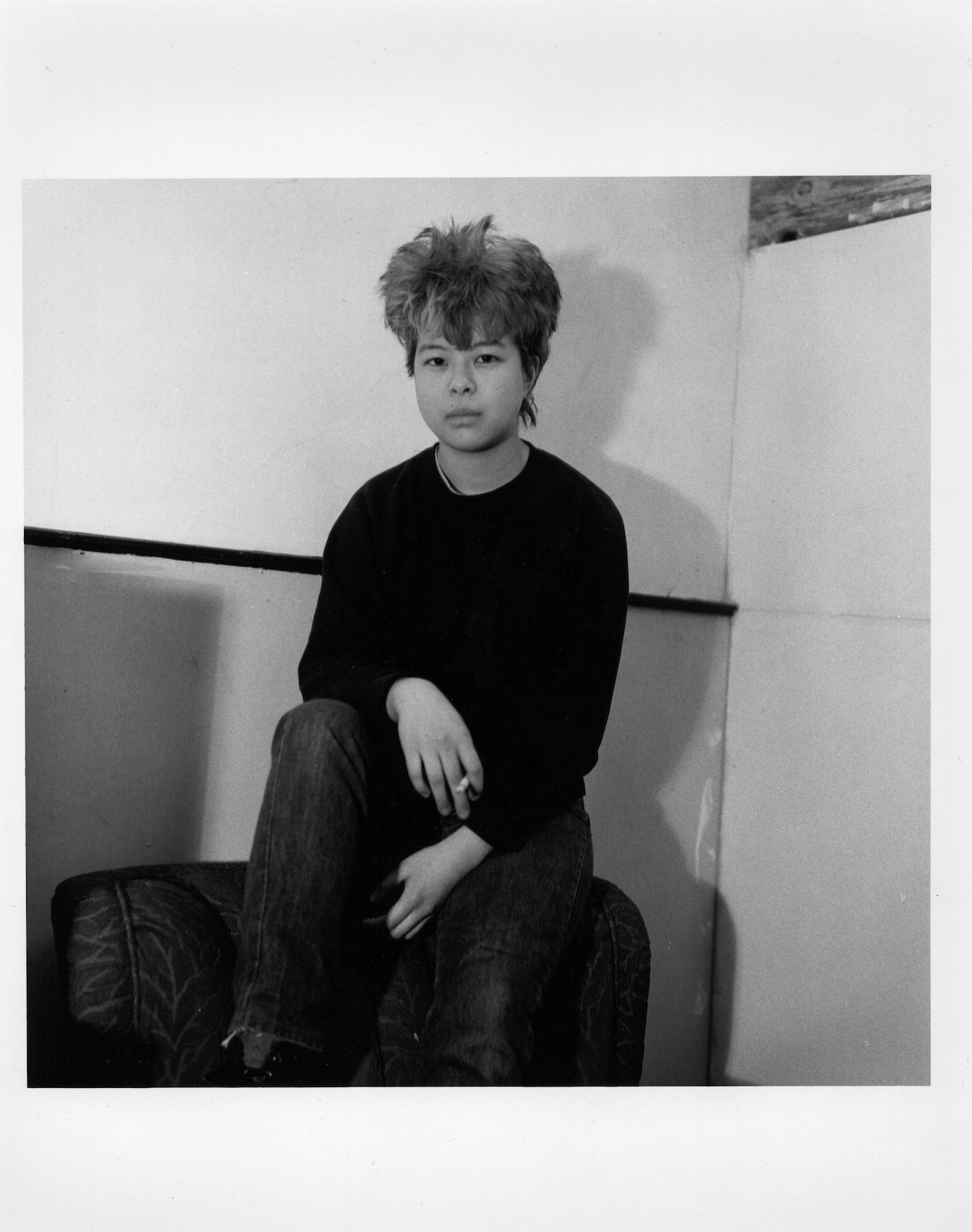Be sure to check out Midi’s excellent website here: http://midionodera.com
Midi Onodera by Randi Spires
The Funnel, Toronto, January 24
Originally published in Vanguard, April/May 1986
Parallax is the apparent change in position of an object resulting from the change in the direction or position from which it is viewed. In the work of Midi Onodera the object is usually social and sexual relations. From the seven short films she made between 1982 to 1985 a number of intriguing questions arise.
Home Was Never Like This (1983) combines still photographs of an ordinary suburban house with the tape from a read-aloud children’s book. The story is “The Country Mouse and The City Mouse.” As we endure the condescending tones of the reader we gradually become aware that this seemingly innocuous and charming fable is actually teaching children to settle for the safe conventional path rather than the more politically dangerous, but ultimately more rewarding route found through questioning and experimentation.
In Idiot’s Delight (1983) we are asked to rethink our ideas regarding celibacy. Arguments for and against the condition are voiced while images of tumbling waves are superimposed over still shots of landscapes and graves. Once the voiceover ceases the landscape disappears while the waves roll on. The film ends with a feeling of deep serenity. But have we been calmed or conned? Is celibacy a gateway to spirituality or a form of death for those wishing to avoid the complexity of relationships?
In Ville? Quelle Ville? (1984) a young woman describes her alienation from the city she lives in. She seems locked into her anomie with no notion of how to later either he perceptions or her actions. In The Dead Zone (1985) another woman is at least trying to change. Although she moves from one relationship to another her patterns have becomes as predictable and numbing as the grids of traffic and telephone wires seen on the screen.
Ten Cents a Dance (Parallax) (1985) is Onodera’s most recent film. In it she looks at three alternative styles of sexuality from three different perspectives. As the relationships shown become less and less intimate so the distance between the viewer and the viewed increases. Throughout the film a split screen is used to symbolize the existential gulf which separates all people. Only occasionally and temporarily is this gap bridged, usually by means of sexual intimacy. In the first part we eavesdrop as a lesbian and a ‘straight’ woman negotiate a one-night stand. The perfunctory nature of this discussion lies in direct contrast to the charming awkwardness of some of their interactions. In the second part one overhead camera focuses on each of two stalls in a men’s washroom. At first this presentation reinforces the prevailing notion of how impersonal gay male sex is but the film eventually questions that idea. Before parting the two men kiss and exchange phone numbers. It’s a touching reminder that closeness, not anonymous sensation, is what they are seeking. Yet it is the simple holding of one woman’s hand by the other in the previous segment that proves to be the more intimate gesture. In the final section we are distanced from the characters as they are from each other. Phone sex, in this case between a man and a woman, is a purely commercial transaction. There is no possibility of any real connection and both participants know it. The film raises some disturbing questions about the ways we go about achieving or avoiding intimacy and the cover-ups used to keep us from seeing what is really going on.
Randi Spires

